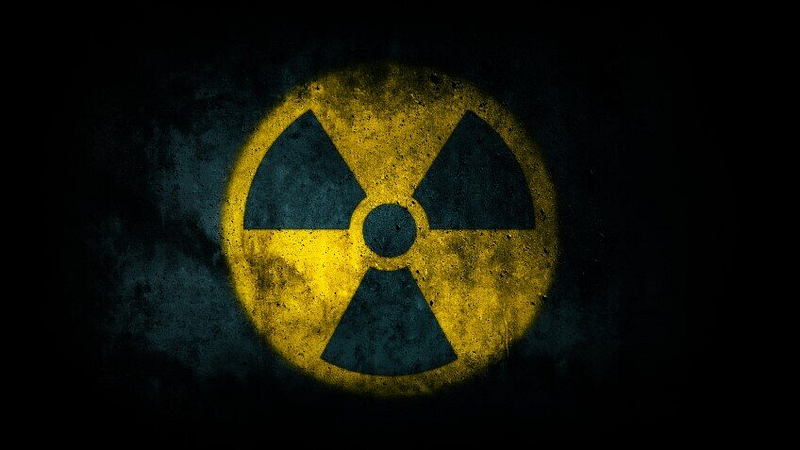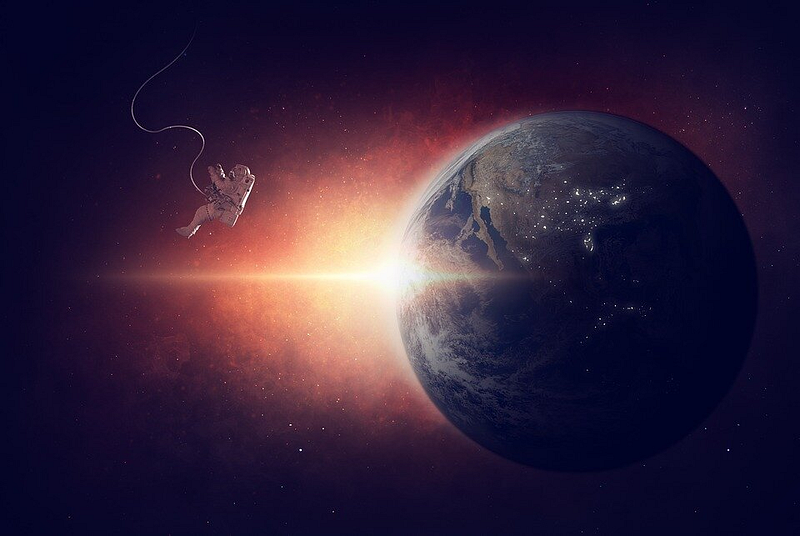# Comparing Cosmic Radiation and Chernobyl Radiation: A Deep Dive
Written on
Chapter 1: Understanding Radiation Types
Recently, a subscriber raised an intriguing question regarding the differences between cosmic radiation and the radiation associated with the Chernobyl disaster. This inquiry frequently emerges in discussions about radiation exposure during space missions. Let's delve into the distinctions together.
Many individuals primarily associate radiation with what they learned in high school physics classes or through films depicting the Chernobyl incident.

In our physics education, we learned about three forms of radioactive radiation: Alpha radiation, which consists of helium nuclei; Beta radiation, made up of electrons; and Gamma rays, which are high-energy photons. All of these are produced during the decay of radioactive materials and can be extremely hazardous. Consequently, the public often harbors misconceptions about radiation and its origins.
From a scientific standpoint, radiation refers to streams of particles capable of ionizing matter, excluding visible light and ultraviolet photons. Alpha, beta, and gamma radiation represent just a few examples of radiation types. In astrophysics, the term "ionizing radiation" is generally used to encompass all such streams. To effectively ionize matter, a particle must have substantial energy, and nuclear decay is merely one of many potential sources.

Gamma rays, which are high-energy photons originating from various sources, do not differ fundamentally from one another. They can be produced during nuclear and thermonuclear reactions, as well as through the annihilation of particle-antiparticle pairs. Consequently, the primary origins of gamma radiation include stars and radioactive materials. The Earth’s magnetic field provides no defense against these photons, while the atmosphere offers minimal shielding, allowing gamma radiation to easily reach the planet's surface and contribute to the natural background radiation.

In most parts of the Solar System, the intensity of gamma radiation is low enough that it poses little threat to living organisms. For gamma radiation to inflict significant harm, one would need to be in proximity to powerful cosmic sources such as supernovae or quasars.
The second category of cosmic radiation involves streams of protons. Stars expel vast quantities of matter from their surfaces, propelled by magnetic fields and sent traveling through space. This ejected material primarily consists of protons, with only trace amounts of helium nuclei. This radiation has an entirely cosmic origin. Due to the shielding provided by the Earth's magnetic field and atmosphere, we hardly experience it at the surface, though it is prevalent in Earth’s orbit.

The third kind of radiation is galactic rays, which are charged particles that have been accelerated by various mechanisms to speeds far exceeding what our Sun can achieve. The exact processes behind this acceleration are intricate and not yet fully understood, often leading to phenomena that seem to defy known physical laws. Galactic rays are predominant in interstellar space and can penetrate the Sun's magnetic field, significantly affecting the overall radiation background (this effect increases with distance from the Sun).
Moreover, there exist more exotic forms of cosmic radiation, albeit much rarer. Neutrinos, for instance, which interact minimally with matter, can reach dangerous radiation levels, particularly near an exploding supernova.
On a personal note, I had the opportunity to visit the Chernobyl exclusion zone. For those interested, more detailed insights can be found in my series of articles: - Part 1: The Journey to the Zone - Part 2: CHORNOBYL - Part 3: Pripyat - Part 4: ZRLS “Duga” - Part 5: The City of Chernobyl
If you enjoyed this content and wish to see more articles about space, please give a thumbs up! Don’t forget to subscribe to our channel and share your questions for future articles.
Chapter 2: Exploring Radioactive Locations
In this section, we will delve into some of the most radioactive places on Earth and the implications of such exposure.
The first video titled "The Most Radioactive Places on Earth" provides a fascinating look at various locations around the globe with high radiation levels. It explores the history and dangers associated with these areas.
Chapter 3: Radiation in Space
Next, we will investigate how radiation in space differs from that found on Earth.
The second video, "How Is Radiation in Space Different From Radiation on Earth?" explains the unique characteristics of space radiation and its potential effects on astronauts and technology.